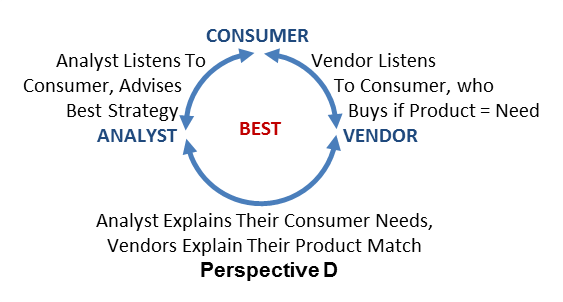Almost every action, choice or decision we make is the result of “influence” in some particular way. Even our personal preferences are shaped by influence, perhaps through the actions of others (“hey, you should really try this out”) or perhaps through our own past experiences (“I don’t care what you say, I’ve tried the bagels at that deli and they just don’t cut it for me”). Peer-pressure, marketing, advertising or even a desire to try something different based on past experiences are all forms of influence that shape our lives.
DIRECT vs INDIRECT INFLUENCE
Nowhere is the impact and value of influence more evident than in the world of business, as businesses are continuously trying to influence their target audience (customers) and partners to their benefit. When it comes to business, there are two different ways that a business or an organization can reach or influence its target audience – direct and indirect. Direct influence is when a business specifically targets or touches their target audience – it is a direct “us to you” type of interaction and gives the business the most control over their message (it’s a one-step connection).
The difference between direct vs indirect influence is like the campfire game – what you tell one person may not be what they tell the next…
Indirect influence, on the other hand, is a bit more of a challenge as it involves a third-party (and intermediary influencer of sorts) that the business needs to influence in the hopes that the third-party will in turn influence their target audience.
UNDERSTANDING WHO INFLUENCES, AND HOW
If we take a look at the different organizations within a typical corporation, we can see how they influence the organization’s customer base.
Direct Influence Groups
- Sales directly touches the customer through personal 1:1 interaction. This is the front line, where the influence of a sales strategy & pitch (or even an individual sales rep) can be the most directly measured.
- Marketing touches the customer base en masse (although sub-segmentation usually occurs to a great extent). Their goal is to directly convey a corporate or product image, create demand and literally influence a customer to think about their product or service. Measuring the success, or influence, of a marketing campaign is possible, but not quite as easily as the direct 1:1 interaction of a sales rep.
- Business Development touches organizational partners. When it comes to building partnerships and team-oriented strategies, business development is the functional equivalent of sales – it is almost always a 1:1 pitch and its effect can be immediately measured.
- Customer Service touches existing customers. When the customer has a problem, customer service can not only help resolve issues and answer questions, but can, on a 1:1 basis, help influence how a customer uses a product/service, how they perceive the company in general and, potentially, influence future sales.
Indirect Influence Groups
- Analyst Relations (AR) involves the process of interacting with, and influencing, industry analysts, who in turn have the ability to influence their clients and followers (your target audience). Measurement of this influence can be difficult.
- Public Relations (PR) targets the press and media (print, online, bloggers, etc.) with the goal of influencing these groups and individuals to share information with, and thus influence, their readers (your target audience). The influence of PR campaigns is often measured by the number of “mentions” a firm has, or by a post-campaign outreach to measure public (potential customer) awareness, or (if the PR campaign is designed to improve the value of a tarnished brand) consumer sentiment.
- Investor Relations (IR) has a similar role to AR, in this case dealing with financial analysts and investment firms with the hopes of shaping a positive image and value proposition about your firm, which they hopefully will share with their clients, resulting in a healthy stock price. Measurement of IR value often (and somewhat unfairly) is measured by stock price or analyst recommendations alone, and not by increases in consumer sentiment or sales (while the financial analysts and investment firms may not directly interact with your target audience, it is hard not to connect the dots between a poor/falling stock price and the reluctance of consumers to purchase your product – nobody today wants to buy from a business that is viewed as financially at risk).
The Wild-Cards
- The C-Suite, who has the ability to make or break a deal, to influence their entire customer base or investor community with a single sentence (think of the power and influence that Steve Jobs has by merely showing up at an event!).
- The Customer – perhaps the most influential group of all, even if they are outside the core corporate structure (a perspective, by the way, that I think is slightly off-base: the customer should *always* be considered part of the complete business organization). Their ability to drive your business should be both welcomed and never underestimated.
ALL ANIMALS ARE EQUAL…
As George Orwell said, “All animals are equal but some animals are more equal than others.” Perhaps the same can be said for influence as well. You could put forth a very interesting argument that certain forms of corporate influence are more important than others, perhaps even more effective than others, and certainly more cost-effective (in terms of bringing new customers to the table, and retaining them over the long term, converting them from customers to clients).
All influencers are equal but some influencers are more equal than others…
So let me pose a few questions – knowing full well that the answers will vary between industries, markets and economic business cycles…
- Are all business groups equal when it comes to the value of their influence?
- Are certain types of corporate influence more effective in *gaining* new customers?
- Are certain types of corporate influence more effective in *retaining* existing customers?
- With a limited budget, where would you focus your resources in building a strong corporate influence strategy?
- Is it possible for all of the different business groups to effectively work together to form a culture of “fluid corporate influence” that operates as a continuous feedback loop, or are there just too many barriers and silos for this to take place (Bonus points if you can give me an example of a firm that does this today!)?
So there you have it. Five simple questions about influence. I’m curious to know how YOU view the value and role of influence in your organization, and how you think it might change as your business changes and evolves over time (hint: the value of influence varies in both time and place).


 It’s hard to think of any aspect of any market sector that doesn’t involve, or revolve around, influence. Back on October 7th, Steve Loudermilk (@loudyoutloud) and I tried a novel approach to our Analyst Relations/Influence chat (#ARchat) by engaging in a joint chat session with #B2Bchat, the B2B chat hosted by Ksenia Coffman (@kseniacoffman), Jeremy Victor (@jeremyvictor), Andrew Spoeth (@andrewspoeth) & the crew at @b2bento.
It’s hard to think of any aspect of any market sector that doesn’t involve, or revolve around, influence. Back on October 7th, Steve Loudermilk (@loudyoutloud) and I tried a novel approach to our Analyst Relations/Influence chat (#ARchat) by engaging in a joint chat session with #B2Bchat, the B2B chat hosted by Ksenia Coffman (@kseniacoffman), Jeremy Victor (@jeremyvictor), Andrew Spoeth (@andrewspoeth) & the crew at @b2bento. 





 In this way, the best possible product offerings can be designed and deployed, giving each of the three participants what they need – the best value for their dollar spent. Note too that in Perspective D I have placed the Consumer at the top of the circle, since they ultimately control what is purchased, and their needs and requirements should be what ultimately influences the market.
In this way, the best possible product offerings can be designed and deployed, giving each of the three participants what they need – the best value for their dollar spent. Note too that in Perspective D I have placed the Consumer at the top of the circle, since they ultimately control what is purchased, and their needs and requirements should be what ultimately influences the market.